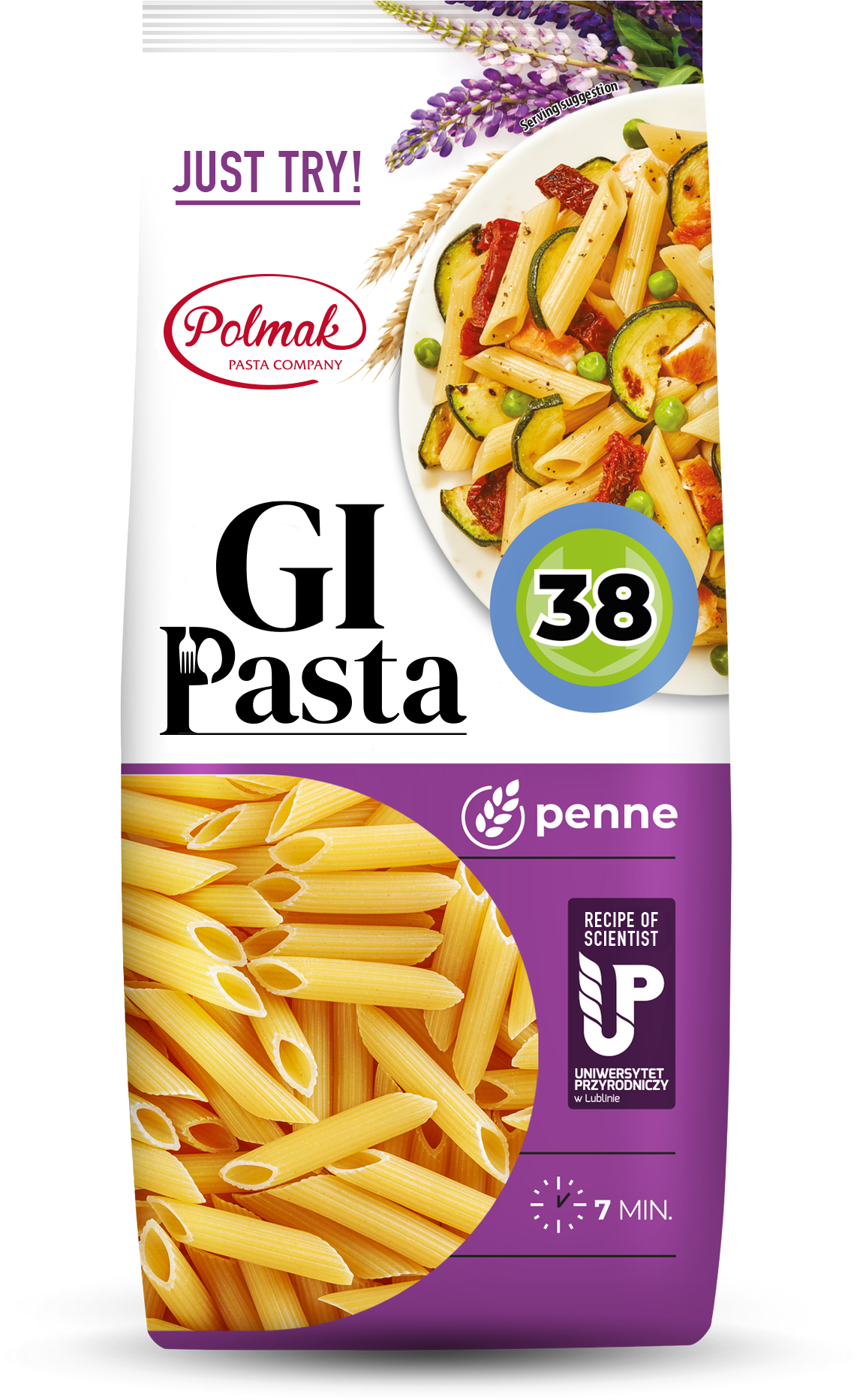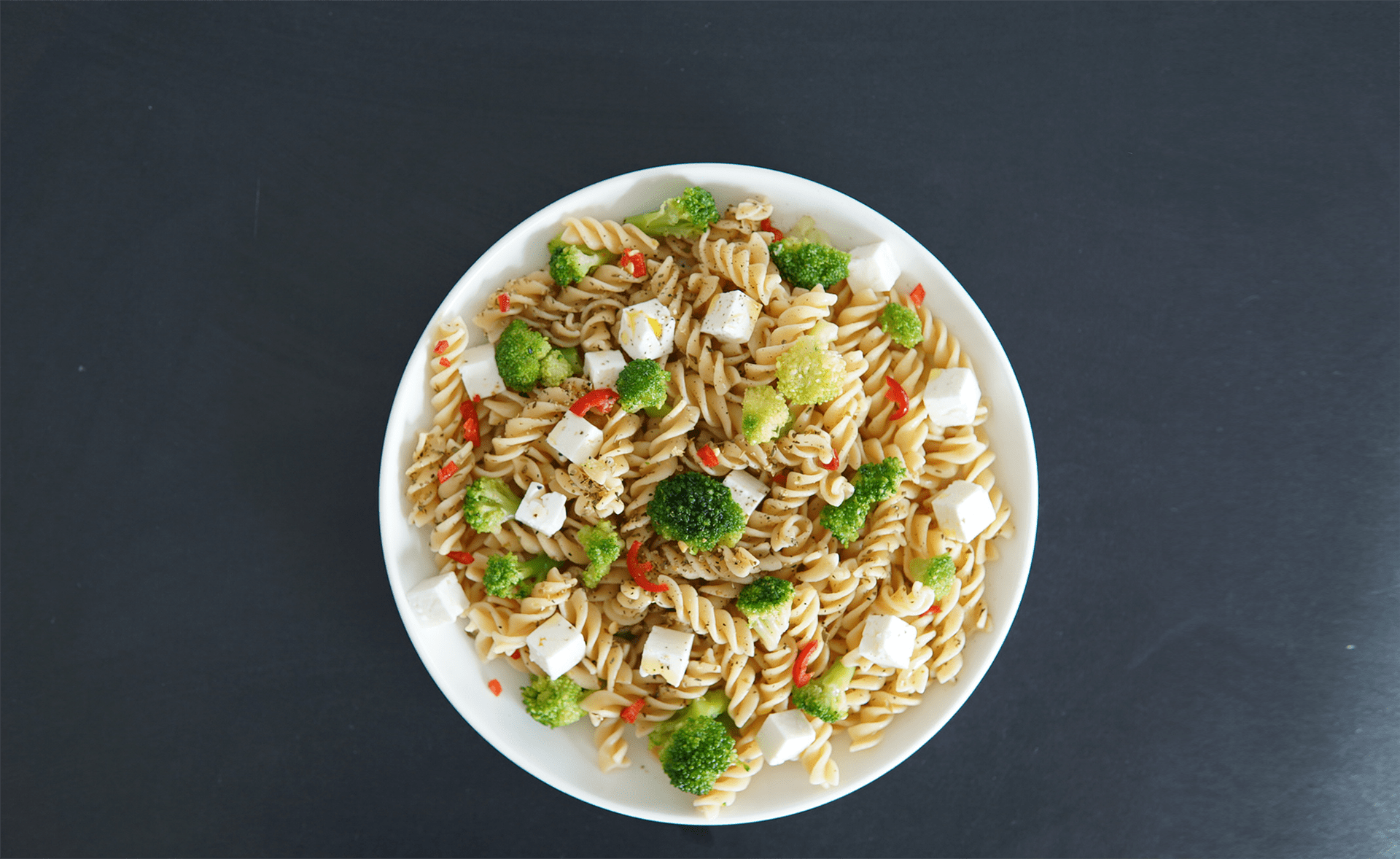As is known, the GI value in a product is extremely important; however, it’s important to remember that it doesn’t matter whether you eat five or two slices of bread, the GI value remains the same regardless of the serving size. That’s why the concept of Glycemic Load plays such an important role, as it relates to the specific portion of the meal consumed. Glycemic Load is a more holistic and useful measure. It takes into account not only the type of carbohydrates contained in a product but also the amount present in a given serving of food.
How to calculate the glycemic load?
Glycemic Index value x amount of carbohydrates in a given serving / 100
To illustrate, let’s compare 100% durum pasta vs. LOW GLYCEMIC INDEX pasta
Durum wheat pasta IG 50
50 IG x 36,5g/100 = 18,2
LOW GLYCEMIC INDEX Pasta 38
38 IG x 24,5g /100 = 9,3
The value was calculated for 50 grams of dry pasta – this is equivalent to about 120 grams of cooked pasta, which is a standard meal serving.
Glycemic Load, just like the Glycemic Index, is classified as:
- Low: 10 or less
- Medium: 10-20
- High: 20 and more
DID YOU KNOW THAT SOME PRODUCTS HAVE A HIGH OR MEDIUM GI, BUT CONTAIN FEW CARBOHYDRATES, HENCE THE GL OF A TYPICALLY CONSUMED PORTION IS LOW?









